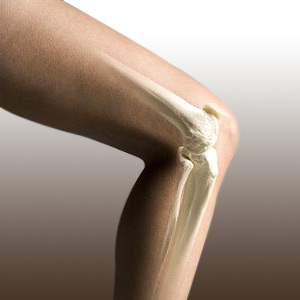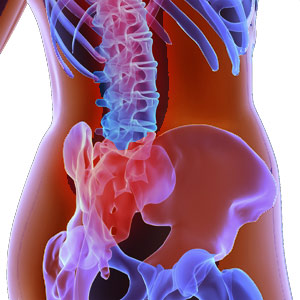Knee Replacement for Women

Although research shows that both women and men use knee replacement, nearly two thirds of the annual knee replacement patients in the US are women according to the National Center for Health Statistics. As such, women seem to experience wear and tear in the joints of the knees more than men.
Knee replacement surgery
Knee replacement surgery or knee arthroplasty is a common surgery for those with severe damaged knee to relieve
the pain and disability from degenerative arthritis known as osteoarthritis. It
is especially for those who do not respond to medicine and other alternative
treatments.
In a total knee replacement surgery, the surgeon removes the damaged cartilage and bone from the surface of the knee joint and replaces them with metal or plastic man-made surface shaped to restore the knee movements and function. The new artificial knee is termed 'prosthesis'. The prosthesis which composes of two metal pieces is fitted to the ends of the tabia and the femur with a plastic piece inserted between them to act as a bearing. Usually a durable and wear resistant polyethylene is used for bearing.
Partial knee replacement surgery is a minimally invasive procedure and the surgeon replaces only one part of the knee joint. Here, only the diseased portion is removed and replaced with metal implant.
- A complete medical history of the patient is evaluated and recorded.
- A physical examination is conducted including how the knee pain affects the patient's daily life.
- Mobility, stability and strength and leg alignment are physically tested.
- The actual surgical procedure takes a couple of hours. It is performed under general or epidural anesthesia. The surgeon
removes the damaged bone and cartilage and inserts the new artificial
joint surface.
- The patient has to stay in the hospital for several
days after the surgery.
- Post operative pain management is crucial and the
surgeon advises the patient on the issue.
- The best way to recover quickly is to get up and move
around although this calls for tremendous effort.
- Most of the times an apparatus that slowly moves the
knee while in bed is also used. This helps to improve circulation and
decrease the amount of swelling in the leg.
- The knee should not be soaked in water until the
wound is completely healed.
- A patient can drive four to six weeks after surgery.
Knee replacement surgery cost
The Joint Replacement Center of NYC offers a guide on the costs involved in a knee replacement surgery:
For patients without health insurance, a total knee replacement surgery could cost about $35000 or even more. Of course, there are health centers that offer uninsured discounts as well which would be a special tariff with a highly discounted price. A partial knee replacement costs about half the amount of a total knee replacement.
Knee replacement surgery as such is covered by health insurance if required by a doctor. Even if patients possess health insurance, there could be out-of-pocket expenses to the tune of $ 4000 to 5000.
For optimal recovery from knee replacement surgery, some preparations to living space are necessary. These include a stable shower bench, a toilet seat raiser with arms, bars in the shower and bath which also involve some expenditure.
Knee replacement surgery recovery
After surgery the patient is usually taken to the recovery room and monitored. Necessary pain medication is
administered on the patient to enable participate in the rehabilitation
exercises. Recovery varies from person to person depending on their level of
pain and activity before their surgery. Factors such as strength before the
surgery, body weight, ability to manage painful symptoms all matter.
Although there could be possible side effects such as scarring, blood clots and infection, orthopedic surgeons advice patients to keep moving those knees. Exercise can make the knee more mobile and certainly stronger. Patients begin with simple activities such as ankle pumps, leg lifts and heel slides. Some surgeons use a motion machine called CPM for continuous passive motion although the benefit of such machines has not been proved.
Most of the patients take their first few steps after surgery with the help of a walker. Some opt for crutches. The physical therapist works on mobility, strengthening and walking even during the hospitalization of the patient. The patient starts preparing for such tasks such as washing, dressing and other daily activities. Patients are trained by the therapists to go up and down the steps using crutches/walker.
Return of the patient to driving depends on the side of the operation and also the type of the vehicle driven. Return to work depends on the kind of job; patients who work in a seated position with limited walking can go back about four to six weeks from the time of surgery. The patient's new knee will perform just like the old one; of course participation in high sporting activities is ruled out.
Knee replacement exercises
Exercise after surgery is pertinent to the success of the total knee replacement. Exercise aids to regain
the increasing motion in the knee following surgery. It prevents muscle loss
and helps rebuild the muscle strength and prevents stiffness of the new knee
joint.
Orthopedic surgeons and physical therapists recommend exercise for approximately twenty minutes to half an hour at least twice daily coupled with a thirty minute walk twice or thrice daily during early recovery. Exercises that are non-weight bearing are the most beneficial. Water exercises, bicycling, stretching programs and yoga help preserve musculature and reduce symptoms.
It is advised to undertake the following post operative exercise regimen under supervision of a therapist.
Knee flexion exercise: Lie in bed on the back and keep legs straight and arms at the side. Slide the foot of the surgical limb toward the back to a point where a mild stretch is felt. This position should be held to a count of ten and then slowly return to the starting position. This exercise promotes muscle activity of the hamstrings and also helps to increase knee flexion.
Straight leg raise: Bend the other leg that has not undergone surgery by raising the knee and keeping the foot flat on the bed. Keep the leg that has undergone surgery straight and about six to ten inches off the bed. Hold this position for about ten seconds and then lower the leg slowly to the bed and repeat twenty times. This exercise promotes strength of the quadriceps and flexor muscles.
Terminal knee extension: Tighten the quadriceps muscle and straighten the knee by lifting the heel off the bed. Hold the muscle contraction for about ten seconds and then slowly lower the heel to the bed. This exercise promotes muscle activity and increases knee extension.
Pillow squeeze: Place a pillow between the knees and squeeze the pillow and hold for a count of ten. Relax for a short period of time and repeat the exercise twenty times. This exercise strengthens the hip and groin muscles.
All types of sports and stressful activities should be avoided. Weight lifting, jumping from heights, falls and exercises with machines are dangerous and should be avoided. As such it is recommended not to lift more than forty pounds. It is advised to start the exercises as soon as the patient is able. Although the patient may feel uncomfortable at first, these exercises will certainly speed the recovery process and help diminish the post operative pain.
Knee replacement alternatives
A knee replacement surgery can be construed as the last resort of defense for arthritis of the knee. There are
several other treatment options and alternatives as not every patient is
suitable to undergo knee replacement surgery due to age or declining health and
other related factors.
- Alternative treatments range from home therapies to
exercise, medications, injections, bracing and arthroscopy. These
treatments either individually or in conjunction help prolong or even
eliminate the need for knee replacement.
- Medications such as Ibuprofen help to decrease the
amount of inflammation in the joint. Recent advances in medicinal research
has thrown open several specific medications to arthritis pain which
exhibit fewer side effects.
- Another alternative line of treatment is localized
injections to the arthritic joints which have proven very effective for
the degenerative knee. This is a painless procedure. As such there are two
different types of injections available; one is the potent
anti-inflammatory ones administered in the joint itself. The other is
lubricating injections which are typically made of hyaluronic acid that is
responsible for elasticity, lubrication and joint motion in a healthy
knee. Such injections are effective for approximately a six month period
and they can be repeated when they work. Injections also provide
significant pain relief and delay the progression of osteoarthritis.
- Drugs such as glucosamine and chondroitin sulfate or
a combination of the two are gaining abundant popularity these days. They
decrease inflammation and preserve the cartilage. Both these drugs are
considered safe and they are sold over the counter. They are expensive and
most insurance companies do not pay for them.
- Specialized braces can be very useful in knee
arthritis. These braces are designed to create forces which help transfer
the stress from one area of the knee where the cartilage is weak to another
area which is in reasonably good shape. But braces are uncomfortable and
they are contraindicated in patients who are obese, have increased risk of
skin breakdown.
- Arthroscopy or the knee scope is another way of
reducing pain associated with arthritis. Small incisions are made around
the knee to evaluate with the help of camera and 'clean up the knee'.
Degenerative cartilage is trimmed and inflammation is significantly
reduced. But the disadvantage of arthroscopy is that its benefit decreases
as the degree of arthritis increases, so much so that even an advance
arthroscopy may have very little value.
In the past during a knee replacement surgery the orthopedic surgeon would make adjustments in order to make a traditional knee implant fit a woman. Whereas recently there knee implants are so designed to fit that lady patient perfectly working on the distinct anatomical difference between women and men.
Top of the Page: Knee Replacement for Women
Tags:#knee replacement for women #knee replacement surgery #knee replacement cost #knee replacement recovery #knee replacement exercises #knee replacement alternatives
 Slipped Disc
Slipped Disc Knee Replacement for Women
Rheumatoid Arthritis
Osteoarthritis
Drop Wrist Deformity
Ankylosing Spondylitis
Spinal Decompression
Scoliosis Treatment
Cause of Osteoporosis
Osteopenia
Bone Density Test
Disc Herniation
Tennis Elbow Symptoms
Restless Leg Syndrome Symptoms
Other health topics in TargetWoman Women Health section:
General Women Health

Women Health Tips - Women Health - key to understanding your health ...
Cardiac Care
Women's Heart Attack Symptoms - Identify heart problems...
Skin Diseases
Stress Hives - Red itchy spots ...
Women Disorders
Endocrine Disorder - Play a key role in overall wellbeing ...
Women's Reproductive Health
Testosterone Cream for Women - Hormone replacement option ...
Pregnancy
Pregnancy - Regulate your lifestyle to accommodate the needs of pregnancy ...
Head and Face
Sinus Infection - Nearly 1 of every 7 Americans suffer from ....
Women and Bone Care

Slipped Disc - Prevent injury, reduce pain ...
Menstrual Disorders
Enlarged Uterus - Uterus larger than normal size ...
Female Urinary Problems
Bladder Problems in Women - Treatable and curable ...
Gastrointestinal Disorders
Causes of Stomach Ulcers - Burning feeling in the gut ...
Respiratory Disorders
Lung function Test - How well do you breathe ...
Sleep Management

Insomnia and Weight Gain - Sleep it off ...
Psychological Disorders in Women
Mood swings and women - Not going crazy ...
Supplements for Women
Women's Vitamins - Wellness needs...
Natural Remedies

Natural Diuretic - Flush out toxins ...
Alternative Therapy
Acupuncture Point - Feel the pins and needles ...
Women Health Directory
Top of the Page: Knee Replacement for Women
Popularity Index: 101,266

